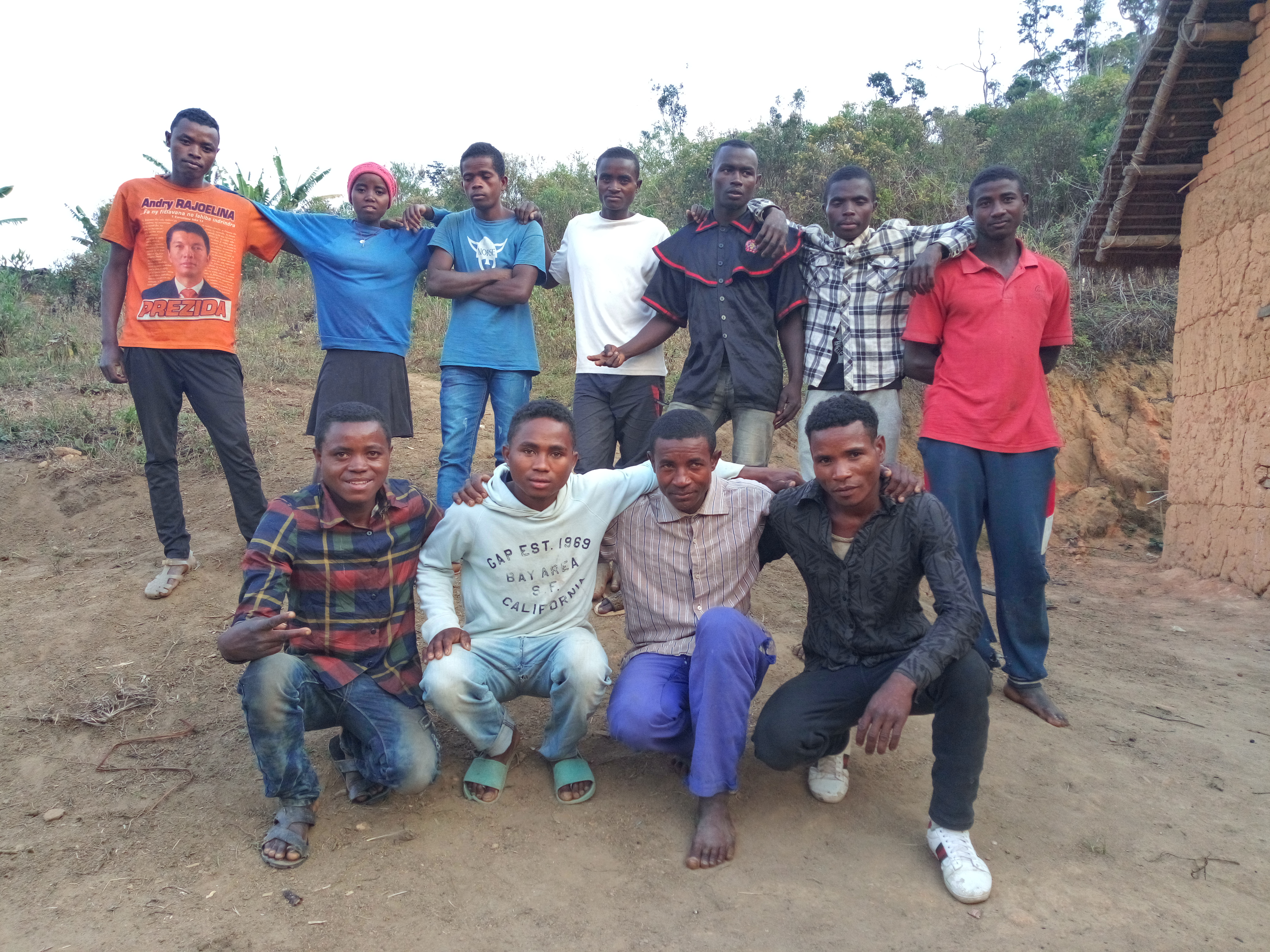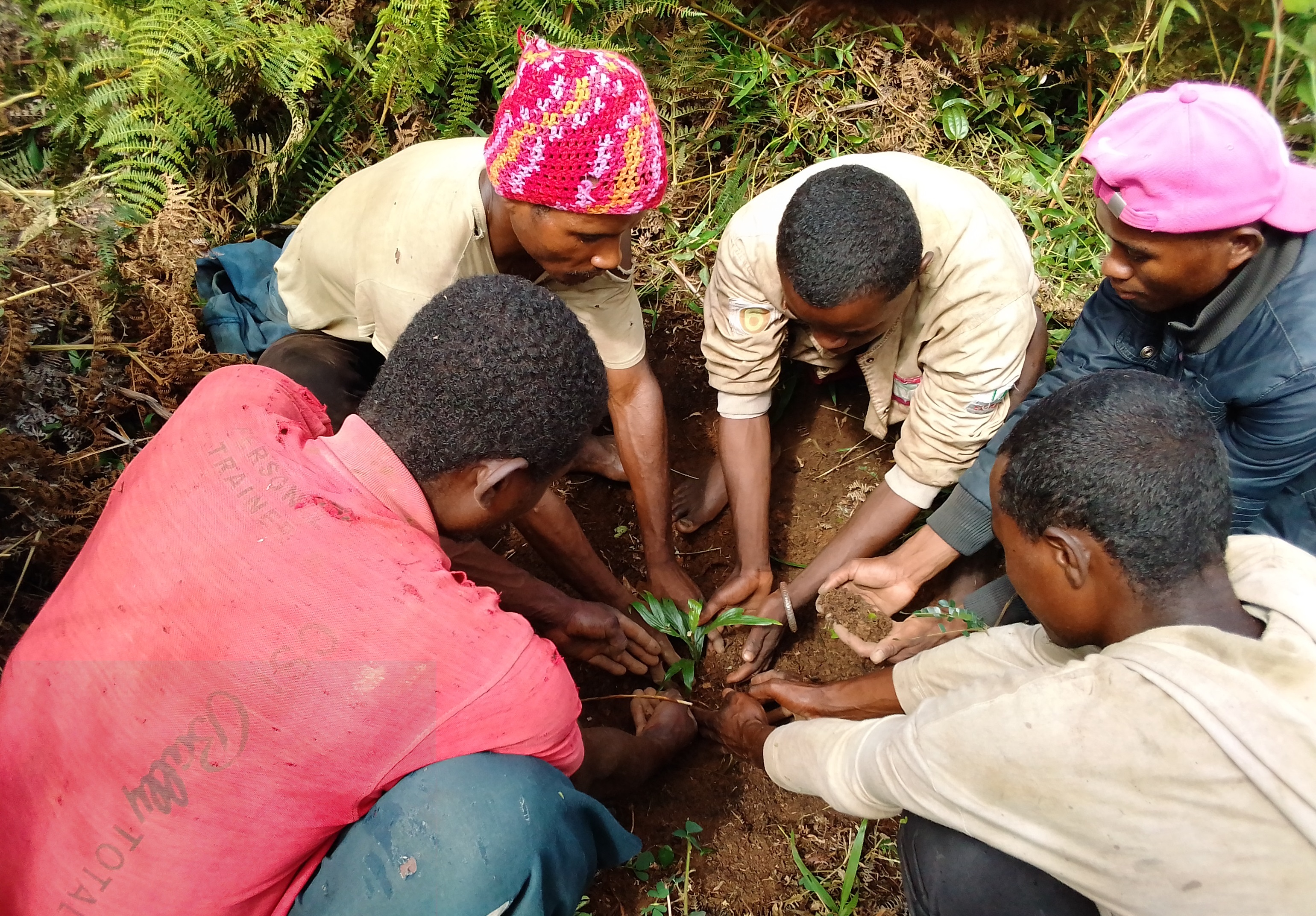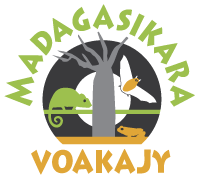
The Indri (Indri indri) and Diademed Sifaka (Propithecus diadema) are among the largest lemurs of Madagascar. Both are listed Critically Endangered on the IUCN Red List (Version 3.1) due to predicted population decline by 80% in the next 36-45 years caused by habitat loss and degradation and increasing hunting pressures. If Madagascar loses its lemurs, the country is likely to lose a major proportion of its income from ecotourism, while missing key ecosystem services provided by lemurs and their forest habitat. It is therefore urgent to save the lemurs from extinction.
In the Moramanga District, we are working for the conservation of lemurs in the Mangabe-Ranomena-Sahasarotra Protected Area by targeting youths. Reports have shown the presence of 55 lemur traps within the Protected Area in 2020. Thus, the young people from Ankarefo village, located on the edge of the forest in the eastern part of the protected area, wanted to change this situation by hoping to improve incomes while preserving the environment. They then asked us for collaboration, that’s why we launched the youth project in Ankarefo in April 2019 with the collaboration of the Mayor of Mangarivotra and the regional staff from the Ministry of Youth.
The youth team called “Sahona mena”, derived from the vernacular name of Mantella Aurantiaca (endemic Golden Mantella), is made up of 11 young people from 14 to 30 years old (11 boys and 2 girls) with a focal point. They opted for improved fish farming. Trainings were given to the members in October 2019 with the support from the regional staffs of the Ministry of Agriculture, Livestock and Fishing. The team raises 103 carps in a surface of 1 are demonstration pond while respecting modern techniques from November 2020. In December 2020, all members adopted fish farming and adapted techniques to the rice fields. In fact, they wish to become major carp suppliers in Moramanga District. Currently, there are 3 adoptions for fish farming and 11 adoptions for rice-fish farming in Ankarefo. In April and May 2021, the carp in the ponds reached 168g with 21 cm in length. The rice crops for rice-fish farming yielded 2 tons per ha on average with carp of 120g and 20 cm in length. We concluded that the fish farming technique is very practical because the food is based on artisanal feed present locally.
In addition, the youth team also participates in patrol activities, reforestation and awareness campaigns on lemur conservation in neighboring villages. They also decided to act on the development of the village by creating and rehabilitating roads. In April 2021, the youth group has already been able to create and rehabilitate around 5 km of road on their own. Their goal is to lead and inspire the community towards sustainable development. We will always continue to monitor and mentor the group in order to guide them properly.
This project, supported by IUCN Save Our Species (https://www.saveourspecies.org/ ), Chester Zoo and the Waterloo Foundation, is targeting in total 16 villages around the Mangabe and Ankeniheny Reserves. Youths and their communities are at different stages of engagement and successes. Our experience to date highlights the importance of engaging youths in the development and conservation processes, as they can rapidly influence the overall community. Interventions need to be adaptive and continued. In addition to the indri and the sifaka, this project will benefit to other threatened species such as the Golden Mantella Frog (Mantella aurantiaca) and other lemur species including the aye-aye (Daubentonia madagascariensis) and the dwarf lemur (Cheirogaleus major).
), Chester Zoo and the Waterloo Foundation, is targeting in total 16 villages around the Mangabe and Ankeniheny Reserves. Youths and their communities are at different stages of engagement and successes. Our experience to date highlights the importance of engaging youths in the development and conservation processes, as they can rapidly influence the overall community. Interventions need to be adaptive and continued. In addition to the indri and the sifaka, this project will benefit to other threatened species such as the Golden Mantella Frog (Mantella aurantiaca) and other lemur species including the aye-aye (Daubentonia madagascariensis) and the dwarf lemur (Cheirogaleus major).
The contents of this article are the sole responsibility of Madagasikara Voakajy and do not necessarily reflect the views of IUCN



